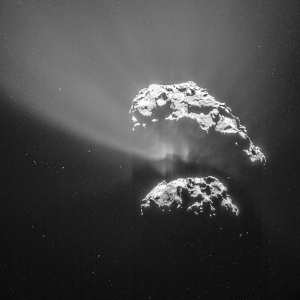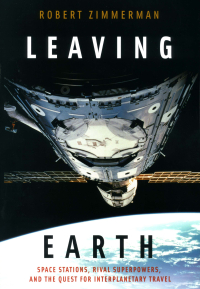Looking down a comet’s plume

More cool images! The Rosetta science team has released another spectacular image, this time looking down into the plume that is coming out from the neck of the nucleus.
In this orientation, the comet’s small lobe is the foreground and the large lobe is in the background. Particularly stunning is the delicate, ethereal glow of activity that contrasts against the shadowed region between the two lobes. From this viewing position the outflowing material seems to take the shape of a broader fan, rather than the more collimated jet-like features seen at other angles.
The fly-by planned for this weekend is only the first of many. As they note,
For the rest of the current mission plan in 2015, in fact, Rosetta will always conduct flybys, and, based on predictions of increasing cometary activity, can no longer be maneuvered so close to the comet as to be in a gravitationally bound orbit.
In other words, the spacecraft and the comet are now in parallel solar orbits, with the spacecraft doing a dance around the comet as they fly in and around the Sun.

More cool images! The Rosetta science team has released another spectacular image, this time looking down into the plume that is coming out from the neck of the nucleus.
In this orientation, the comet’s small lobe is the foreground and the large lobe is in the background. Particularly stunning is the delicate, ethereal glow of activity that contrasts against the shadowed region between the two lobes. From this viewing position the outflowing material seems to take the shape of a broader fan, rather than the more collimated jet-like features seen at other angles.
The fly-by planned for this weekend is only the first of many. As they note,
For the rest of the current mission plan in 2015, in fact, Rosetta will always conduct flybys, and, based on predictions of increasing cometary activity, can no longer be maneuvered so close to the comet as to be in a gravitationally bound orbit.
In other words, the spacecraft and the comet are now in parallel solar orbits, with the spacecraft doing a dance around the comet as they fly in and around the Sun.




